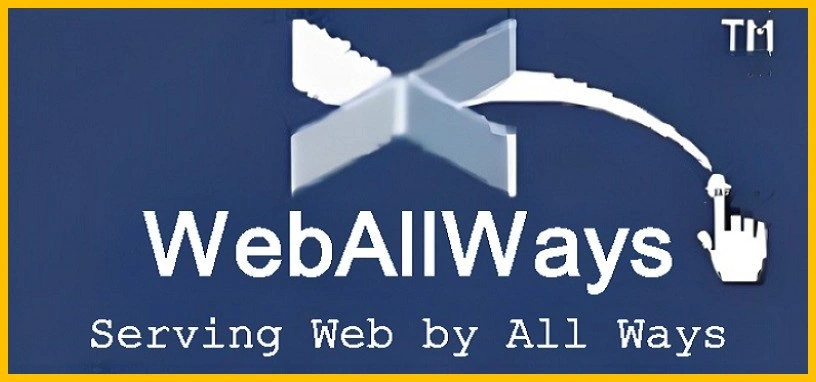
Website speed optimization is a crucial component of a successful engagement and business in today’s fast-paced digital world.
High-speed websites improve user experience, increase retention, and serve to internet users ‘ever-increasingly patient needs at the same time.
This guide will provide you with useful information on how to improve the state of affairs and how to use appropriate strategies to maximize website speed.
What is Page Speed Optimization?
Making changes to your website to make it load and display more quickly is known as web page speed optimization.
Users will have a better user experience the faster your website loads, which can improve engagement and conversion rates. Improving website speed is also important for on-page SEO.
Through the life cycle of a website, strategic planning and decision-making are involved in optimizing website speed.
What is an Optimal Website Speed?
The “optimal “speed for a website can be determined by a number of factors, including the website’s content and user expectations. However, it is frequently recommended that a web page load in less than two to six seconds as a general guideline.
What might you think makes it significant? Here’s the reason, though:
- When a website’s load speed is changed from one to three seconds, the bounce rate( age users who leave without engaging) increases to 32%.
- A website should load in less than two seconds to achieve a bounce rate of 5%.
- 79% of shoppers are more reluctant to make purchases on slow websites.
- Websites should load in less than three seconds according to 47% of users.
These are abstract goals, so it’s important to remember that achieving them won’t guarantee that your website will top Google’s search results. Speed is increasingly important in search rankings in addition to the numerous other factors.
Additionally, while speed improvement is important, it shouldn’t compromise functionality, aesthetics, or usability. Speed is just one aspect of the ultimate goal, which is to provide a high-quality user experience.
Why do you need Speed Optimization for your website?
Over time, the importance of testing and optimizing a website’s performance and speed has grown. It’s obvious why tech businesses are focused on it, as we previously stated in numbers on bounce rates and conversion rates.
For your consideration should be some more logical justifications for enhancing your website’s speed, as well as a description of the factors making it even more important in 2023:
User Experience (UX): Slow website speeds can annoy users, causing user engagement and satisfaction to decline. Users who stay on your website for longer, interact with your content more, and convert more frequently( for example, to make a purchase, sign up for a newsletter, etc.) can do so with a smooth, responsive user experience.
Mobile Internet Use: The use of mobile devices has increased exponentially. Speed and performance optimization are even more important because mobile users frequently have varying connectivity and speed conditions.
SEO Ranking: Site speed is one of the SEO ranking factors in search engines like Google. Faster websites are more likely to have higher search engine results pages( SERPs), which increases traffic and visibility. Google developed a new ranking system called Core Web Vitals that prioritizes user experience, including interactivity, visual stability, and loading speed.
eCommerce Growth: The global pandemic of 2020 and 2021 has caused a sizable increase in online and e-commerce purchases, a trend that is likely to continue until 2023. The performance and speed of websites have a direct impact on sales and revenue for online retailers.
Increasing Web Complexity: With more scripts, images, third-party integrations, and high-quality content than ever before, web applications are becoming more complex. Making the best user experience possible by focusing on speed and performance optimization.
5G and Edge Computing: Users ‘expectations for website performance are higher than ever with the ongoing global roll-out of 5G technology and the rise of edge computing. These innovations offer significantly faster load times and lower latency.
Sustainability: Digital technologies ‘negative effects on the environment are becoming more prevalent. A website that is optimized, efficient, and uses more data could also be a more environmentally conscious choice, reducing its carbon footprint.
Scalability: As your website expands, more users, page views, and content will be added. Growth will only make things worse for your website if it is already growing slowly. Your website’s speed will increase as your business expands and expands, ensuring that your website can handle the more traffic and content that come with it.
Competitive Advantage: A faster website can give you an advantage over competitors. You’re more likely to attract and retain users if your website is faster than those of your competitors. Speed can be a key difference-maker in the online world, where users can switch between websites in a matter of seconds.
Conversion Rates: Slow websites can affect conversion rates directly. Optimizing your website’s speed is crucial if your website is an online store or relies on user conversions to generate revenue.
20 Website Speed Optimization Strategies for 2025
A multifaceted approach is required to improve a website’s speed and performance, including the need to implement specialized procedures at the design, development, and deployment levels.
Here are 20 pointers that will help you achieve better exercise results:
Design-Level Optimization
Design Mobile-First: Design your website first and foremost with mobile users in mind, given the prevalence of mobile browsing. This design is typically more streamlined, which increases speed.
Simplify Your Design: A straightforward design is frequently more efficient. Avoid using expensive design elements and focus solely on the essentials. If you are on WordPress, use light and simple themes to ensure that your WordPress website design have fast loading speed.
Use Adaptive Assets: Use images that can be adapted to the user’s screen size. It’s preferable to use vector formats like .svg and .webp. over .jpeg and .png. etc. Use web fonts sparingly and only download the required styles and character sets if they can slow down your website.
Limit the Use of Animations: While animations can increase your website’s visual appeal, they can also cause sluggishness. Use them sparingly.
Development-Level Optimization
Minify CSS, JavaScript, and HTML: Reduce the size of these files by removing unnecessary characters, line breaks, and spaces, according to CSS, JavaScript, and HTML.
Use Asynchronous Loading for CSS and JavaScript Files: CSS and JavaScript files are loaded synchronously, which can affect page speed by default. Multiple files can load at once with asynchronous loading.
Reduce Redirects & API calls: Your page is slowed down by each additional HTTP request that is triggered by each redirect. Avoid unnecessary API calls like AJAX whenever possible.
Avoid or Limit the Use of Plugins and Widgets: Use of plugins and widgets should be avoided or limited because each one of you creates requires resources to function. Only when necessary and sparingly use them.
Leverage Caching: When a user visits a webpage, the browser caches the URL resource files on a local computer. Your website will load more quickly for repeat visitors if you make use of caching.
Enable Compression: Use compression tools like Gzip to reduce the size of your CSS, HTML, and JavaScript files.
Avoid Render-Blocking assets: By avoiding using asynchronous loading to stop linked assets from loading before your webpage’s first image.
Optimize Time to First Byte (TTFB): The time it takes a browser to receive the first byte of data from the server is measured by the TTFB( Optimize Time to First Byte). Your TTFB can be improved by lowering the server response time.
Use Latest Versions of Everything: Using the most recent version of your website can significantly speed up your website if it is hosted on WordPress or another PHP-based CMS. Similar to other technologies like HTTP and NodeJS, React, Webpack, SSL/TLS, etc. use the most recent versions to improve security and speed.
Deployment-Level Optimization
Choose the right Hosting Provider: Site speed is important to a good hosting company. Multiple websites running simultaneously on a single server may cause shared hosting to be slow. Consider VPS or dedicated hosting.
Use Content Delivery Network (CDN): A CDN can store a cached version of your website in various geographical locations to reduce the workload associated with delivering content.
Implement Load Balancing: Using more than one server to balance the load can shorten response times if your website receives a lot of traffic.
Optimize Integrations: Regular optimization of your database and other crucial integrations can help you increase the performance of your website, especially for dynamic websites. This might involve performing routine clean-ups and removing unnecessary data or connections.
General Best Practices
Prioritize Above-The-Fold Content (Critical Rendering Path): For a better user experience, prioritize above-the-fold content( Critical Rendering Path) to ensure that the content that appears on the screen first( above the fold) loads quickly.
Remove Unnecessary Metadata: Your website may be slowed down by excessive metadata in HTML, CSS, and JavaScript. Remove anything that isn’t necessary.
Implement Automated Tests, Audits and Reporting: Regularly checking for speed and other crucial metrics can save your website from performance issues or, worst-case scenario, stop a complete failure.
Conclusion
The success of any website depends on web page speed optimization, which has a number of facets.
A constant effort must be made to increase website speed, ensure a superior user experience, and ultimately increase user engagement and conversions in order to stay ahead online.
Optimizing web page speed is a necessary requirement as the digital landscape gets more competitive, and it has a direct impact on user experience, SEO rankings, and user engagement.
The best website speed is indeed achievable with the right combination of design, development, and deployment strategies.
